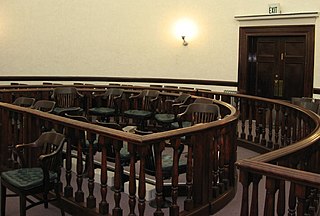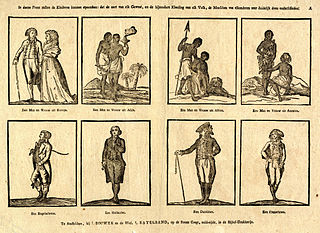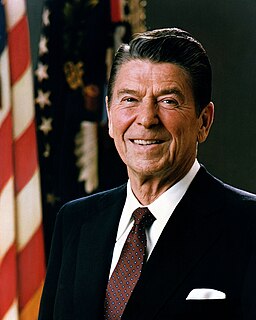Self-perception theory (SPT) is an account of attitude formation developed by psychologist Daryl Bem. It asserts that people develop their attitudes by observing their own behavior and concluding what attitudes must have caused it. The theory is counterintuitive in nature, as the conventional wisdom is that attitudes determine behaviors. Furthermore, the theory suggests that people induce attitudes without accessing internal cognition and mood states. The person interprets their own overt behaviors rationally in the same way they attempt to explain others' behaviors.
The out-group homogeneity effect is one's perception of out-group members as more similar to one another than are in-group members, e.g. "they are alike; we are diverse". The term "outgroup homogeneity effect", "outgroup homogeneity bias" or "relative outgroup homogeneity" has been explicitly contrasted with "outgroup homogeneity" in general, the latter referring to perceived outgroup variability unrelated to perceptions of the ingroup.
Stereotype threat is a situational predicament in which people are or feel themselves to be at risk of conforming to stereotypes about their social group. Stereotype threat is purportedly a contributing factor to long-standing racial and gender gaps in academic performance. It may occur whenever an individual's performance might confirm a negative stereotype because stereotype threat is thought to arise from a particular situation, rather than from an individual's personality traits or characteristics. Since most people have at least one social identity which is negatively stereotyped, most people are vulnerable to stereotype threat if they encounter a situation in which the stereotype is relevant. Situational factors that increase stereotype threat can include the difficulty of the task, the belief that the task measures their abilities, and the relevance of the stereotype to the task. Individuals show higher degrees of stereotype threat on tasks they wish to perform well on and when they identify strongly with the stereotyped group. These effects are also increased when they expect discrimination due to their identification with a negatively stereotyped group. Repeated experiences of stereotype threat can lead to a vicious circle of diminished confidence, poor performance, and loss of interest in the relevant area of achievement.

Claude Mason Steele is an African-American social psychologist. He was the executive vice chancellor and provost at the University of California, Berkeley, and he currently serves as a professor of psychology at Stanford University.
Social perception is the study of how people form impressions of and make inferences about other people as sovereign personalities. People learn about others' feelings and emotions by picking up information they gather from physical appearance, verbal, and nonverbal communication. Facial expressions, tone of voice, hand gestures, and body position or movement are a few examples of ways people communicate without words. A real-world example of social perception is understanding that others disagree with what one said when one sees them roll their eyes. There are four main components of social perception: observation, attribution, integration, and confirmation.
Aversive racism is a theory proposed by Samuel L. Gaertner & John F. Dovidio (1986), according to which negative evaluations of racial/ethnic minorities are realized by a persistent avoidance of interaction with other racial and ethnic groups. As opposed to traditional, overt racism, which is characterized by overt hatred for and discrimination against racial/ethnic minorities, aversive racism is characterized by more complex, ambivalent expressions and attitudes.
Self-image is the mental picture, generally of a kind that is quite resistant to change, that depicts not only details that are potentially available to objective investigation by others, but also items that have been learned by that person about themself, either from personal experiences or by internalizing the judgments of others.
Mark Schaller is a psychological scientist who has made many contributions to the study of human psychology, particularly in areas of social cognition, stereotyping, evolutionary psychology, and cultural psychology. He is Professor of Psychology at the University of British Columbia.

Steven L. Neuberg is an experimental social psychologist whose research has contributed to topics pertaining to person perception, impression formation, stereotyping, prejudice, self-fulfilling prophecies, stereotype threat, and prosocial behavior. His research can be broadly characterized as exploring the ways motives and goals shape social thought processes; extending this approach, his later work employs the adaptationist logic of evolutionary psychology to inform the study of social cognition and social behavior. Neuberg has published over sixty scholarly articles and chapters, and has co-authored a multi-edition social psychology textbook with his colleagues Douglas Kenrick and Robert Cialdini.
Within social psychology self-stereotyping is a process described as part of social identity theory (SIT) and, more specifically, self-categorization theory (SCT). Self-stereotyping occurs when an individual integrates commonly held characterizations of an in-group into his or her self-concept.
An implicit bias, or implicit stereotype, is the unconscious attribution of particular qualities to a member of a certain social group. Measurement of this effect has been termed as pseudoscience by some peers.
Stereotype embodiment theory (SET) is a theoretical model first posited by psychologist Becca Levy to explain the process by which age stereotypes influence the health of older adults. There are multiple well-documented effects of age stereotypes on a number of cognitive and physical outcomes.
In social psychology, the stereotype content model (SCM) is a model, first proposed in 2002, postulating that all group stereotypes and interpersonal impressions form along two dimensions: (1) warmth and (2) competence.
The imagined contact hypothesis is an extension of the contact hypothesis, a theoretical proposition centred on the psychology of prejudice and prejudice reduction. It was originally developed by Richard J. Crisp and Rhiannon N. Turner and proposes that the mental simulation, or imagining, of a positive social interaction with an outgroup member can lead to increased positive attitudes, greater desire for social contact, and improved group dynamics. Empirical evidence supporting the imagined contact hypothesis demonstrates its effectiveness at improving explicit and implicit attitudes towards and intergroup relations with a wide variety of [stigmatized] groups including religious minorities, the mentally ill, ethnic minorities, sexual minorities, and obese individuals. Researchers have identified a number of factors that influence the effectiveness of the imagined contact hypothesis including vividness of the imagery and how typical the imagined outgroup individual is. While some researchers question the effectiveness of the imagined contact hypothesis, empirical evidence does suggest it is effective at improving attitudes towards outgroups.
Patricia Grace Devine is a professor of psychology at the University of Wisconsin–Madison, where she was the psychology department chair from 2009 to 2014. She was also the 2012 president of the Society for Personality and Social Psychology.
There is a great deal of research on the factors that lead to the formation of prejudiced attitudes and beliefs. There is also a lot of research on the consequences of holding prejudiced beliefs and being the target of such beliefs. It is true that advances have been made in understanding the nature of prejudice. A consensus on how to end prejudice has yet to be established, but there are a number of scientifically examined strategies that have been developed in attempt to solve this social issue.
Intergroup relations refers to interactions between individuals in different social groups, and to interactions taking place between the groups themselves collectively. It has long been a subject of research in social psychology, political psychology, and organizational behavior.













